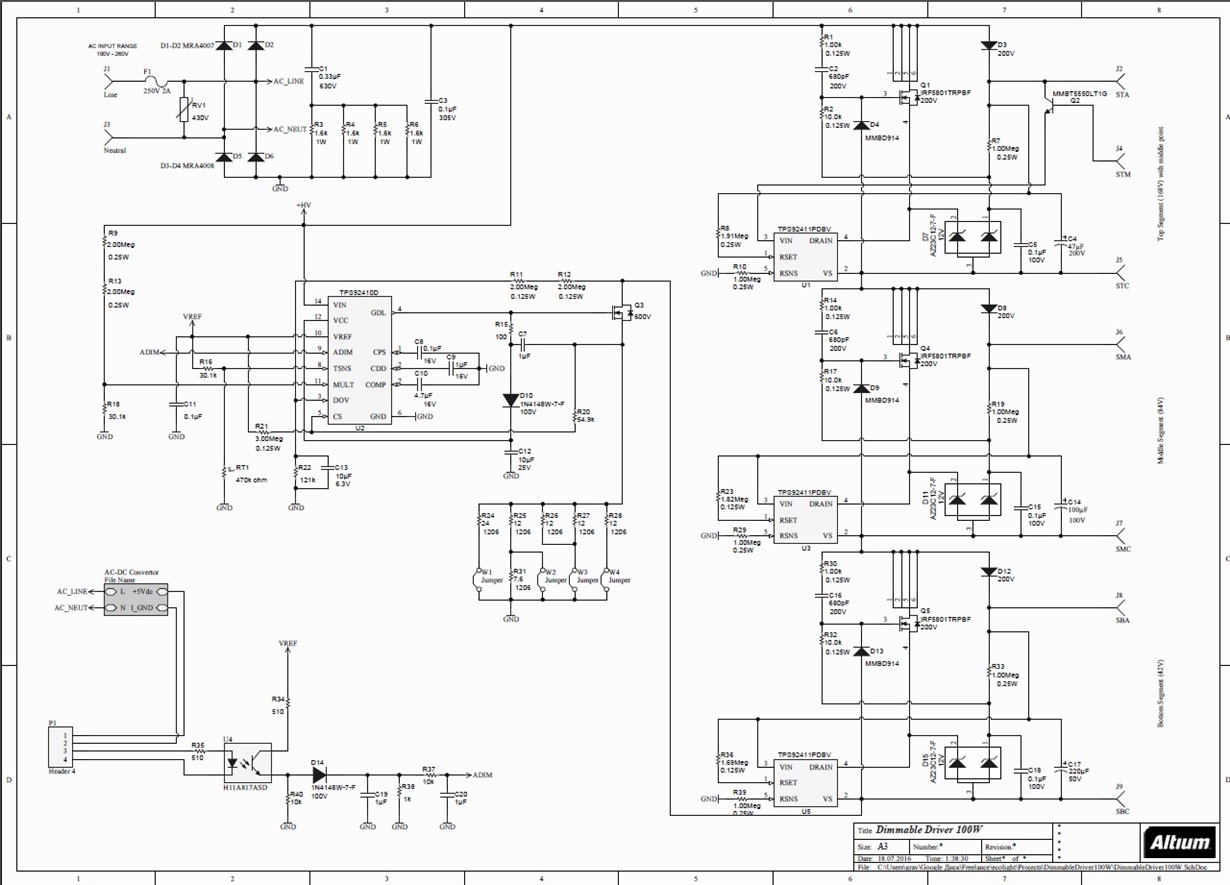Hello!
I tried to do LED driver board based on PMP6021 document. It works, but I have the problem - when I try to use ADIM input (with potentiometer or from external voltage source), I see the LEDs are dimming, but not linear for values of input voltage lower than approx 0,3V. Also some segments have different brightness.
The values of elements are equal to PMP6021.
What may be wrong?
PS Triac dimming also works incorrect for small dimmer values



